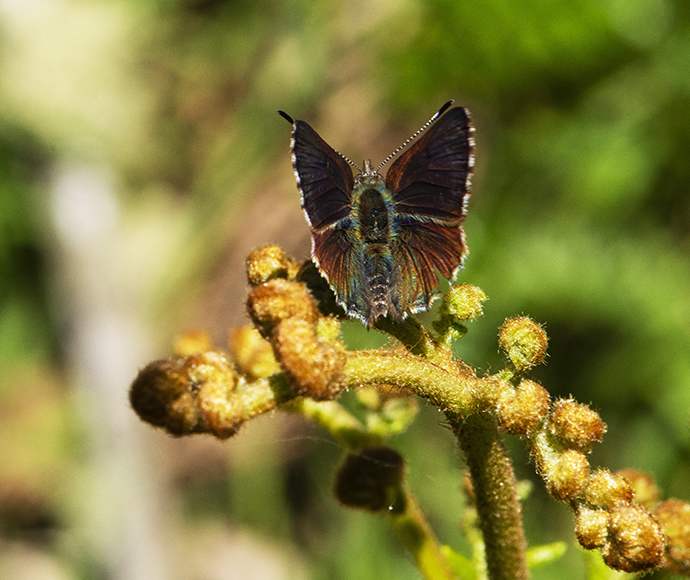If you live in the Central Tablelands you may see a rare iridescent treat on your property this spring.

The purple copper butterfly spreads its wings from late August to late October, and citizen scientists are needed to record sightings on the Butterflies Australia app in a project partnership with the NSW Government's Saving our Species program.
In one sense, the rare butterflies are easy to spot. They fly on fine, sunny days and have very specific habitat.
"The endangered purple copper butterfly is only found with native blackthorn bush, around the Bathurst, Lithgow and Oberon areas, and above 850-metre elevations," said Jess Peterie, Threatened Species Officer, Department of Planning, Industry and Environment.
"Coppers live near native blackthorn. Chrysalides live underneath the bushes, caterpillars eat its leaves.
"For anyone who has bush remnants on their property with native blackthorn bushes, we'd love you to count some coppers."
The 'Counting Coppers' project hopes to gain a better understanding of when and where this endangered butterfly is flying and possibly uncover more populations.
"Purple coppers have beautiful iridescent metallic coloration on their backs, so in the sunlight there are flecks of purple and blue. Photos really don't do it justice. It is both beautiful and special to see one flying in the wild."
Locals can download the easy-to-use app on either iOS or Android by searching for Butterflies Australia.
Simple video instructions for the app and registering for the Counting Coppers project is available on the NSW Government's Seed website.
Purple copper butterflies thrive in a very specific habitat and have developed a unique relationship with ants and native blackthorn bush.
Its caterpillars feed exclusively on the blackthorn leaves, and while feeding, they are often surrounded by 10 to 30 ants protecting them from huntsman spiders and wasps. In return, the ants eat sugary residue from the caterpillars' backs.
Coppers have a flying life of just two weeks, but the staggered emergence of adults from the chrysalides means the season for spotting them can last for 6 to 8 weeks, typically from late August to October.
The NSW Government's Saving our Species program is partnering on the Counting Coppers project with Central Tablelands Local Land Services, Lithgow and Oberon Landcare Association and Butterflies Australia.






